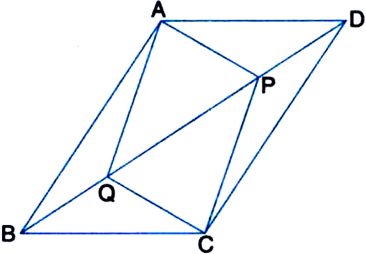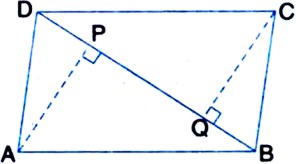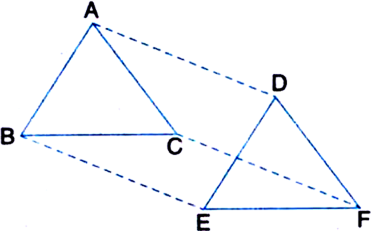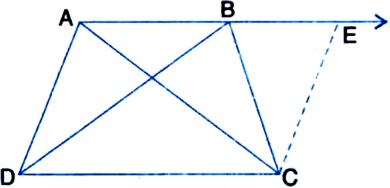In ∆ABC, AD is the median through A and E is the mid-point of AD. BE is produced to meet AC in F. Prove that 
To Prove: AF=
Construction: Draw DG || EF to intersect AC in G.
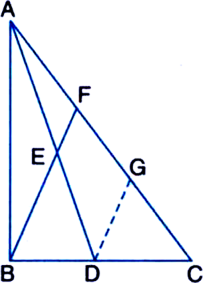
Proof: ∵ EF || DG | by construction
and AE = ED
| ∵ E is the mid-point of AD
∴ AF = FG ...(1)
| A line drawn through the mid-point of a side of a triangle parallel to another side bisects the third side
Again,
DG || EF | by construction
and CD = DB
| ∵ D is the mid-point of
∴ BC FG = GC ...(2)
| A line drawn through the mid-point of a side of a triangle parallel to another side bisects the third side
From (1) and (2),
AF = FG = GC
Now, AF + FG + GC = AC
⇒ AF + AF + AF = AC
| From (1) and (2)
⇒ 3 AF = AC





